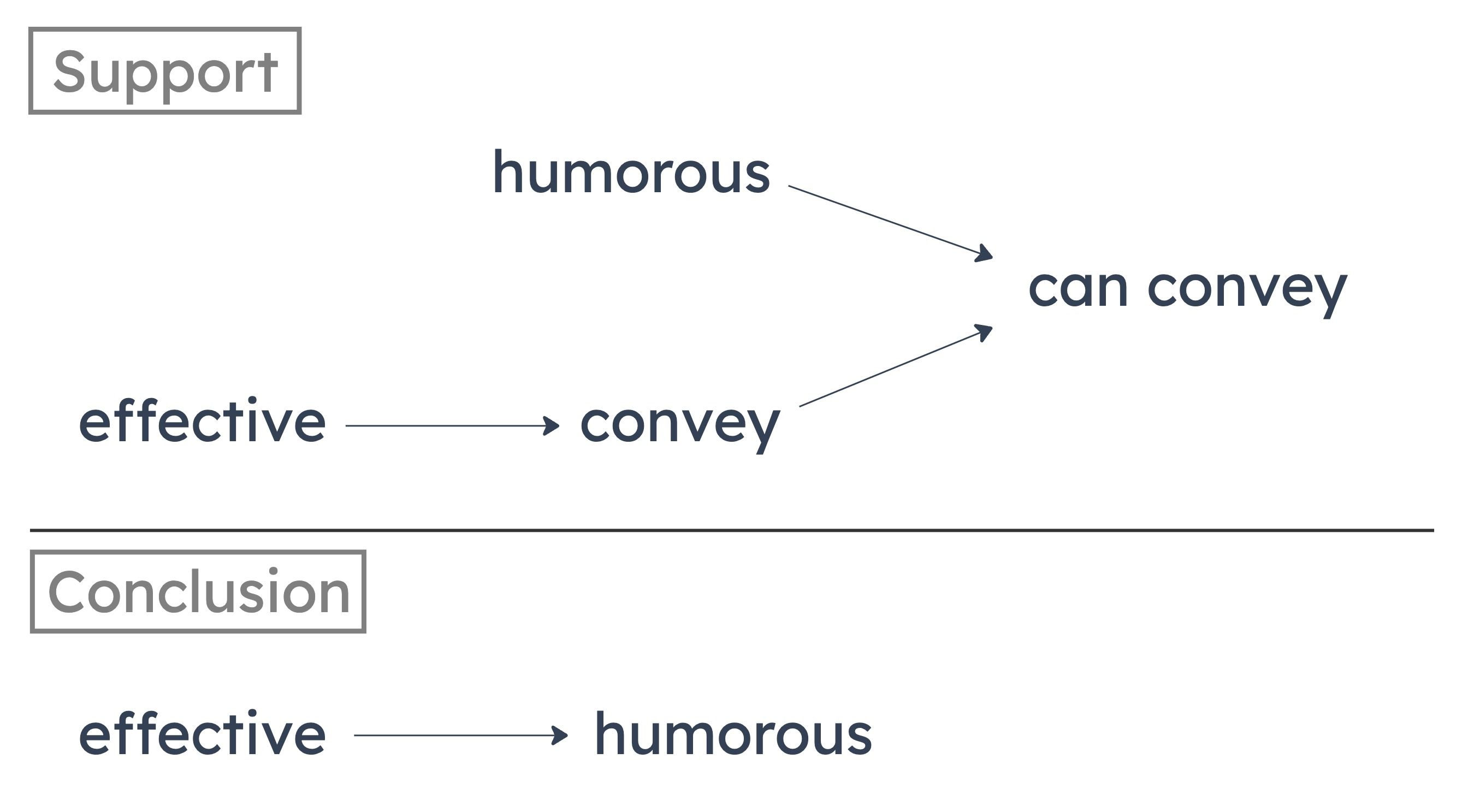Depression is a serious problem for residents of nursing homes. However, a recent study has found that residents who developed personal bonds with pets had significantly lower rates of depression than did residents who did not develop personal bonds with pets.
Summary
Depression is a serious problem in nursing homes. However, a recent study found that residents who formed bonds with pets had much lower rates of depression than those who didn't.
Strongly Supported Conclusions
Encouraging nursing home residents to have pets could potentially help to lower the rate of depression in nursing homes.
Depression in nursing homes might in part stem from residents’ lack of companionship.
A
Nursing-home residents are more subject to depression than any other individuals.
Unsupported. The stimulus tells us that depression is a serious problem for residents of nursing homes. However, it does not compare rates of depression among nursing home residents to rates of depression among anyone else.
B
The best method for helping a nursing-home resident to overcome depression is to provide access to a pet.
Unsupported. Although forming bonds with pets significantly lowers rates of depression among nursing home residents, we do not know that this is the best way for residents to overcome depression.
C
High rates of depression among nursing-home residents may result at least in part from a lack of companionship.
Strongly supported. Residents who formed bonds with pets had much lower rates of depression than those who didn’t, and bonds with pets are a kind of companionship. So, rates of depression may result in part from a lack of companionship.
D
Animal companionship is essential for psychological well-being.
Unsupported. We do not know that animal companionship is essential for psychological well-being simply because animal companionship could help alleviate depression in some circumstances.
E
Allowing free access to pets in nursing homes would eliminate problems relating to depression.
Unsupported. Allowing free access to pets could alleviate rates of depression in nursing homes, but we have no way to know whether it would entirely eliminate all problems relating to depression.
(1) If something is humorous, it will attract people’s attention and allow a message to be conveyed.
(2) If an ad is effective, it must convey its message.

He argues that if an ad is effective, it must be humorous, since humorous ads can convey a message. But what if other ads, like emotional ads, can also convey a message? In that case, humorous ads might not be the only effective ones.
A
It takes for granted that nothing but humor can attract a person’s attention and hold it long enough for a message to be conveyed.
B
It confuses attracting a person’s attention with holding a person’s attention long enough for a message to be conveyed.
C
It treats a necessary condition for an advertisement’s being effective as if it were a sufficient condition.
D
It uses two senses of the term “effective” without differentiating them.
E
It takes for granted that an advertisement’s only purpose is to convey its message.
A
For the most part, stories of people developing serious health problems shortly after receiving vaccinations involve vaccines that were recently introduced.
B
Some of the illnesses that vaccines are designed to prevent have become so rare that even if people are not vaccinated, they are unlikely to contract those illnesses.
C
People are no more likely, on average, to develop serious health problems shortly after receiving vaccinations than shortly before receiving vaccinations.
D
The health problems that some people have developed shortly after receiving vaccinations have been more serious than the health problems that the vaccines were intended to prevent.
E
In a few cases in which people developed serious health problems shortly after taking other medications, these problems were initially attributed to coincidence but were later determined to be due to the medications.
Chad: Stray cats are not only a nuisance, they spread diseases and cause injuries to other cats and to humans. People feed these animals out of kindness, but doing so only exacerbates the problem unless the cats are then captured and adopted.
A
It is usually wrong to feed stray cats.
B
There are more stray cats than there should be.
C
Stray cats are a problem because of the risk they pose to humans.
D
Stray cats spread diseases to other cats.
E
It is mainly out of kindness that people feed stray cats.
Lawn soil needs macronutrients and micronutrients to remain healthy long-term.
Widely available commercial fertilizers only contain macronutrients.
Raking up grass clippings instead of letting them decay in the soil depletes soil’s micronutrients.
Homeowners who use widely available commercial fertilizer and also rake their grass clippings need to use another source of micronutrients in order for their soil to remain healthy long-term.